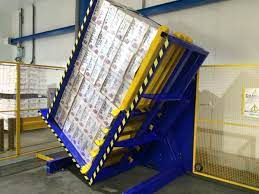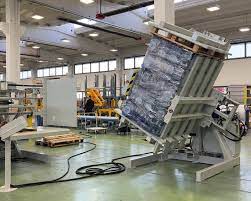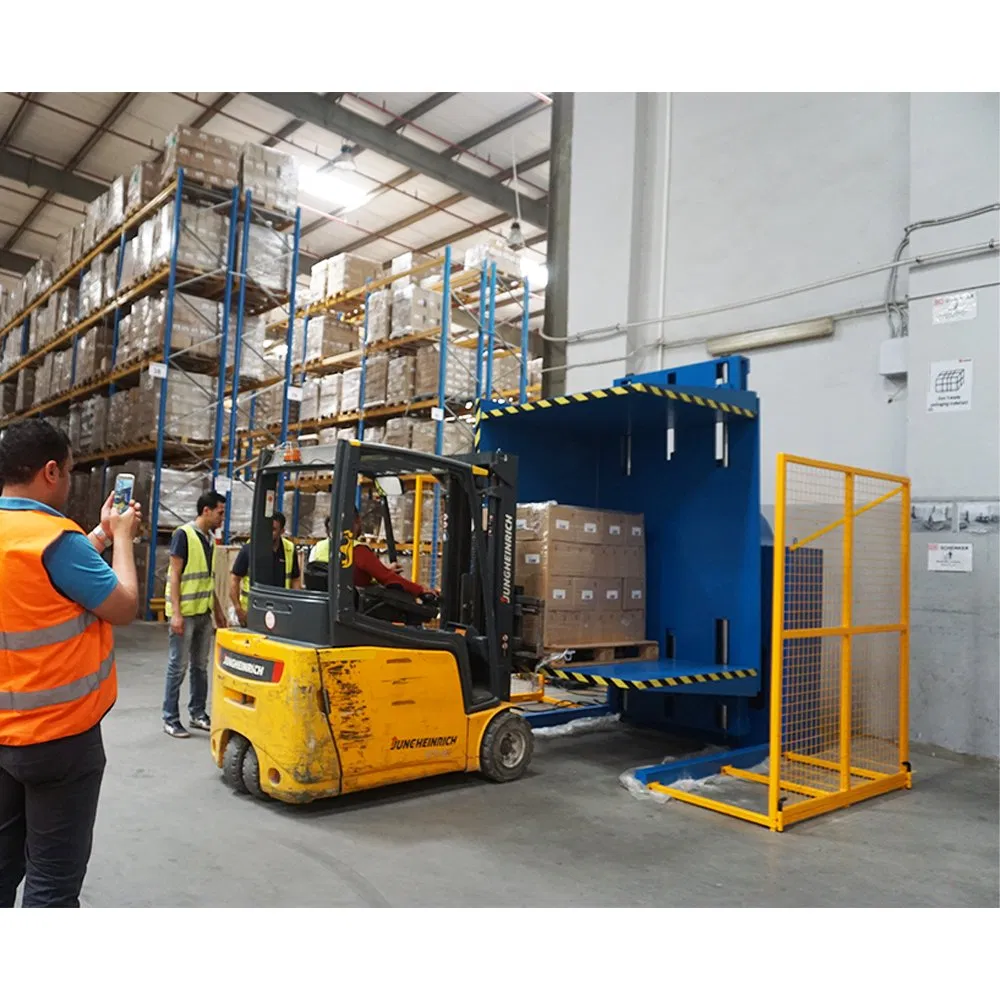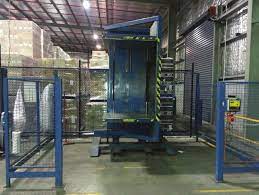What’s the ROI of Automated Pallet Changing Machines in India's Cost-Effective Sector?
Running a business in India’s manufacturing sector is a constant balancing act. You need to keep costs low to stay competitive. But you also need to be efficient and produce high-quality goods, especially if you export. Many factory owners I talk to feel stuck. They rely on manual labor for tasks like changing pallets, thinking it’s the cheapest option. But they see product damage, workplace accidents, and production bottlenecks that eat away at their profits and limit their growth.
So, what is the real return on investment (ROI) for an automated pallet changing machine in India? The ROI is significant and typically fast. Most businesses can expect to see a full return on their investment within 18 to 36 months. This return comes from direct savings in labor costs, a dramatic reduction in product damage (often by over 90%), and a substantial increase in throughput and operational efficiency. It's not just an expense; it's a strategic investment in profitability and scale.

I know what you're thinking. A machine like this seems like a big upfront cost, especially in a market where every rupee counts. You have to be sure it will pay for itself. As an engineer who built his own factory from the ground up, I understand this better than anyone. I've been there, making those same tough decisions. So let's move past the general idea and break down the real numbers and benefits. We will look at how to calculate the ROI for your specific operation, explore the hidden benefits beyond the balance sheet, and see why this technology is a perfect fit for the future of Indian manufacturing.
How Do You Calculate the Direct Financial ROI?
You're a business owner. You look at a new piece of equipment and the first question that comes to mind is, "What's the payback?" It’s a great question. Investing without understanding the numbers is just gambling. But when you rely on manual labor, you're dealing with rising wages, inconsistent performance, and the constant risk of accidents. You know there has to be a better way, but you need to prove it on paper before you can commit.
The direct financial ROI is calculated by comparing your total investment against your annual savings. The formula is simple: (Annual Savings - Annual Operating Costs) / Total Investment Cost. Most pallet changers have very low operating costs, so the main focus is on the savings. These savings come primarily from three areas: reduced labor costs, eliminated product damage, and lower insurance or compensation claims.

Diving Deeper into the Calculation
To get a real, actionable number, you need to break down the costs and savings accurately. It’s not just about the sticker price of the machine. It's about the total picture. I've helped countless clients with this analysis, and it always starts by looking at your current process with a critical eye.
Step 1: Calculate Your Total Investment Cost
This is more than just the machine's price. A true calculation includes everything needed to get the system operational.
- Machine Cost: The price of the pallet changer itself.
- Shipping and Installation: The cost to get it to your factory in India and have it professionally installed.
- Training: The cost of training your team to operate and maintain the machine safely and efficiently. This is a small cost but crucial for maximizing uptime.
Step 2: Calculate Your Annual Savings
This is where the real power of automation becomes clear. Be honest and thorough here.
- Labor Savings: This is the most obvious saving. How many workers does it take to change pallets manually? What are their fully-loaded wages (including benefits, insurance, etc.)? An automated pallet changer can often do the work of 2-4 employees per shift.
- Reduced Product Damage: This is a huge, often underestimated, cost. Manually handling heavy or awkward loads leads to drops, scrapes, and contamination. Track how much product you lose or have to discount due to damage during pallet transfer. Automation can reduce this to near zero.
- Fewer Workplace Injuries: Manual lifting of heavy loads is a primary cause of back injuries and other musculoskeletal problems. These lead to lost workdays, higher insurance premiums, and potential legal issues. Automation eliminates this risk entirely.
Here is a simple table to help you visualize the comparison. Let’s imagine a scenario for a medium-sized factory in India.
| Cost/Benefit Category | Manual Pallet Changing (Annual Cost) | Automated Pallet Changer (Annual Impact) |
|---|---|---|
| Labor | 2 workers x 2 shifts @ ₹3,00,000/yr each = ₹12,00,000 | 1 operator (part-time) = ₹1,50,000 (Savings: ₹10,50,000) |
| Product Damage | 1% of goods valued at ₹5 Cr = ₹5,00,000 | Near zero damage = ₹0 (Savings: ₹5,00,000) |
| Injury Costs | Average 1 minor incident/yr = ₹50,000 | No lifting injuries = ₹0 (Savings: ₹50,000) |
| Total Annual Savings | - | - |
| Result | ₹18,00,000 in annual operating costs | ₹16,00,000 in annual savings |
If the total investment for an automated system was, say, ₹25,00,000, your payback period would be just over 1.5 years. That's a powerful ROI that any business owner or CEO can appreciate.
What Are the Hidden Operational Benefits Beyond Direct Savings?
You've calculated the financial ROI. The numbers look good. But if you stop there, you're only seeing half the story. A machine is just a piece of metal until it's integrated into your workflow. The biggest changes I see in my clients' businesses are not just on their profit and loss statement. They are on the factory floor. They feel a sense of chaos being replaced by control, of unpredictability being replaced by stability.
The true value of an automated pallet changer lies in the operational transformation it creates. Focusing only on direct cost savings is like buying a smartphone just to make calls. You are missing out on its most powerful features. These hidden benefits are what turn a good investment into a game-changing one, especially for a leader focused on long-term stability and growth.

Diving Deeper into Operational Excellence
A factory is a complex system. A bottleneck in one area can slow down the entire production line. Manual pallet changing is often one of these hidden bottlenecks. Automating it doesn't just fix one problem; it unlocks potential across your entire operation. Let’s explore these powerful, but often overlooked, benefits.
A Leap in Throughput and Consistency
A manual team might take 5-10 minutes to transfer a pallet, and their speed varies. An automated pallet changer does the same job in 60-90 seconds. Every single time. This consistency is golden. It means you can accurately plan your production schedule. It eliminates the "wait time" that kills productivity. If your goal is to increase equipment uptime to 95%, you cannot afford to have your main production line waiting for a pallet to be changed manually. Automation makes your workflow predictable and fast, directly contributing to higher overall equipment effectiveness (OEE).
Enhanced Product Quality and Hygiene
For industries like food, pharmaceuticals, or high-end electronics, quality is non-negotiable. Manual handling introduces risks of contamination from dirty hands, broken wood pallet fragments, or pests. Automated systems provide a closed-loop, touch-free transfer. This is essential for meeting international quality standards like GMP (Good Manufacturing Practice) or HACCP. You can switch from wood pallets for internal use to clean, hygienic plastic pallets for shipping without any manual intervention, ensuring your product arrives at the customer in perfect condition.
Improved Employee Morale and Skill Development
What happens to the workers who used to do the heavy lifting? They are not simply replaced. They are upskilled. They learn to operate and maintain sophisticated machinery. This transition from manual labor to a technical role is often a source of pride. It creates a more skilled, engaged, and valuable workforce. You are not just buying a machine; you are investing in your people's future and making your factory a better, safer place to work. This helps with employee retention and attracts better talent.
| Operational Area | The Manual "Pain Point" | The Automated Advantage |
|---|---|---|
| Speed & Flow | Slow, inconsistent transfer times create bottlenecks. | Fast, predictable cycle times (e.g., 90 seconds). Smooth production flow. |
| Safety | High risk of back injuries, strains, and crushed feet. | Eliminates all manual lifting of heavy loads. Drastically improved safety. |
| Quality Control | Risk of contamination, damage from drops, wood splinters. | Gentle, secure handling. Ideal for hygienic or fragile goods. |
| Space Utilization | Requires a large, open area for manual maneuvering. | Compact footprint. Frees up valuable floor space for production. |
| Data & Planning | Process is invisible to management systems. Hard to track. | Can be integrated with MES/WMS. Provides valuable data for planning. |
How Does Automation Fit India's Specific Economic Landscape?
I often hear a common objection, especially from businesses in India. "Why should I automate when labor is so affordable here?" It's a valid question on the surface. But it’s based on an outdated view of India’s economy and the global market. The goal isn't to be the cheapest; it's to be the best value. Relying on low-cost labor alone is a fragile strategy. Wages are rising, skilled workers are becoming harder to find, and your international competitors are already using automation to their advantage.
The smart move in India today isn't about replacing people. It's about empowering them. Automation in a cost-effective sector like India's is a strategic tool. It allows you to scale your business, meet world-class quality standards, and compete on a global stage. It frees your valuable human workers from repetitive, dangerous tasks so they can focus on roles that require critical thinking and skill.

Diving Deeper into the Indian Context
Thinking that "cheap labor" is India's only competitive advantage is a trap. The true advantage lies in combining a talented workforce with modern, efficient technology. This is the core principle behind initiatives like "Make in India." It’s about building a robust manufacturing ecosystem, not just a low-cost one.
Moving from "Low Cost" to "High Value"
The global market pays for quality and reliability, not just a low price. If you are exporting goods to Europe or North America, your customers have strict standards. They expect perfectly packed products on clean, compliant pallets. A single damaged shipment can ruin a relationship. Manual handling is inherently inconsistent. Automation guarantees that every single pallet is handled with the same precision and care. This consistency builds trust and allows you to compete for higher-value contracts. It shifts your company's reputation from being a "low-cost supplier" to a "high-quality partner."
The Scalability Challenge
Let’s say a big order comes in and you need to double your output. With a manual process, you need to hire and train more workers. This takes time, costs money, and introduces variability. What happens when the order is finished? You have excess labor. An automated system doesn't have this problem. It can run 24/7 with the same high level of performance. It allows your business to scale up or down quickly in response to market demand, like the fluctuations in the steel or automotive industries. This agility is a massive competitive advantage. It ensures you can meet your goals for产能利用率 (capacity utilization) without being limited by labor availability.
Addressing the Infrastructure Reality
In some parts of India, power supply can be unstable. This is a real concern for any CEO considering automation. However, modern pallet changers are remarkably energy-efficient. They use power only during their short cycle time. Compared to the massive energy consumption of a furnace or rolling mill, a pallet changer's energy use is tiny. Furthermore, they are built to be robust and reliable, requiring minimal maintenance. They are designed to work consistently in demanding industrial environments, making them a perfect fit for a modernizing Indian factory that needs dependable equipment. This directly supports the goal of lowering overall energy consumption by ensuring every part of the process is as efficient as possible.
What Should I Look For in a Supplier to Maximize ROI?
You've decided that an automated pallet changer is the right move. You see the financial and operational benefits. Now comes the most critical decision: who do you buy it from? This choice will determine whether your investment is a huge success or a constant headache. Buying a machine is not like buying a commodity. A cheap machine from a supplier who disappears after the sale can cost you far more in downtime and lost production than you saved on the initial price.
You are not just buying a piece of equipment. You are entering a long-term relationship. You need a partner, not just a vendor. A true partner understands your business, helps you choose the right solution, and stands by you for the entire life of the machine. This is the difference between simply buying a tool and making a strategic investment that pays dividends for years to come.

Diving Deeper into Finding a Strategic Partner
As a CEO or owner, you know the value of strong partnerships. Your relationship with your equipment supplier should be no different. A good partner will actively help you maximize your ROI. Here’s what to look for and what to be wary of.
Deep Industry Expertise
Does the supplier understand your industry? A pallet changer for bags of cement is very different from one for steel coils or pharmaceutical vials. A supplier with experience in your sector, like the steel industry, will understand your specific challenges: heavy loads, abrasive environments, and the need for extreme reliability. They can recommend the right machine—be it an inverter, a pusher, or a custom solution—that is perfectly suited to your product and workflow. They should speak your language and understand your goals for things like reducing energy costs and improving safety.
Comprehensive Lifecycle Support
The relationship should begin long before the sale and continue long after.
- Pre-Sale: A good partner will analyze your current process, help you with the ROI calculation, and propose a solution that fits your specific needs and budget.
- Installation & Commissioning: They should offer professional installation and commissioning services to ensure the machine is set up correctly and integrated seamlessly into your production line.
- Training: They must provide thorough training for your operators and maintenance staff.
- After-Sales Service: This is crucial. What is their plan for providing spare parts, technical support, and preventative maintenance? A strong service network, especially in a country as large as India, is non-negotiable.
A Culture of Knowledge Sharing
This is something I feel very strongly about. A supplier should be a source of knowledge. They should be willing to share their expertise to help you improve your entire packaging and handling process. This is the mission behind SHJLPACK. We don't just sell machines. We share what we've learned over decades in the industry to help our clients succeed. Your supplier should be a resource you can call with questions, not just a number you call when something is broken.
| Supplier Evaluation Criteria | The "Box Seller" Vendor | The Strategic Partner |
|---|---|---|
| Approach | Sells a standard, one-size-fits-all machine. | Analyzes your process and recommends a custom solution. |
| Expertise | General knowledge of machinery. | Deep expertise in your specific industry (e.g., steel, pharma). |
| Support | Support ends after the sale is complete. | Provides full lifecycle support: installation, training, maintenance. |
| Relationship | Transactional. You are a sales number. | Relational. You are a long-term partner in success. |
| Goal | To sell you a machine. | To help you achieve your business goals (e.g., lower costs, increase ROI). |
Choosing the right partner is the final, critical step in ensuring your investment in automation delivers the maximum possible return.
My Insights
When I first started as a young engineer in a packing machine factory, I saw these challenges firsthand. I saw workers struggling with heavy loads. I saw products damaged by careless handling. And I saw how these small, daily problems added up to big losses for the company. Later, when I took the risk to start my own factory, I knew I had to do things differently. I invested in automation early, not because I had a lot of money, but because I knew I couldn't afford not to. That decision was a cornerstone of my success. It gave me the efficiency and quality to grow my business, achieve financial independence, and help my clients grow theirs.
This is why I founded SHJLPACK with a mission to share knowledge. The coil packing and handling industry has given me everything. Now, I want to give back. I see business owners like Javier Morales, smart and forward-thinking leaders who want to build something lasting. My advice is simple: look at automation not as a cost, but as an enabler. An automated pallet changer isn't just a machine that swaps pallets. It is a machine that buys you speed, safety, quality, and the capacity to scale. It's a strategic asset that frees you and your team to focus on bigger goals. Investing in the right technology, with the right partner, is how you build a resilient, profitable business for the future.
Conclusion
Automated pallet changers offer a powerful and rapid ROI in India’s manufacturing sector by cutting labor costs, eliminating product damage, and boosting operational efficiency, paving the way for sustainable growth.




